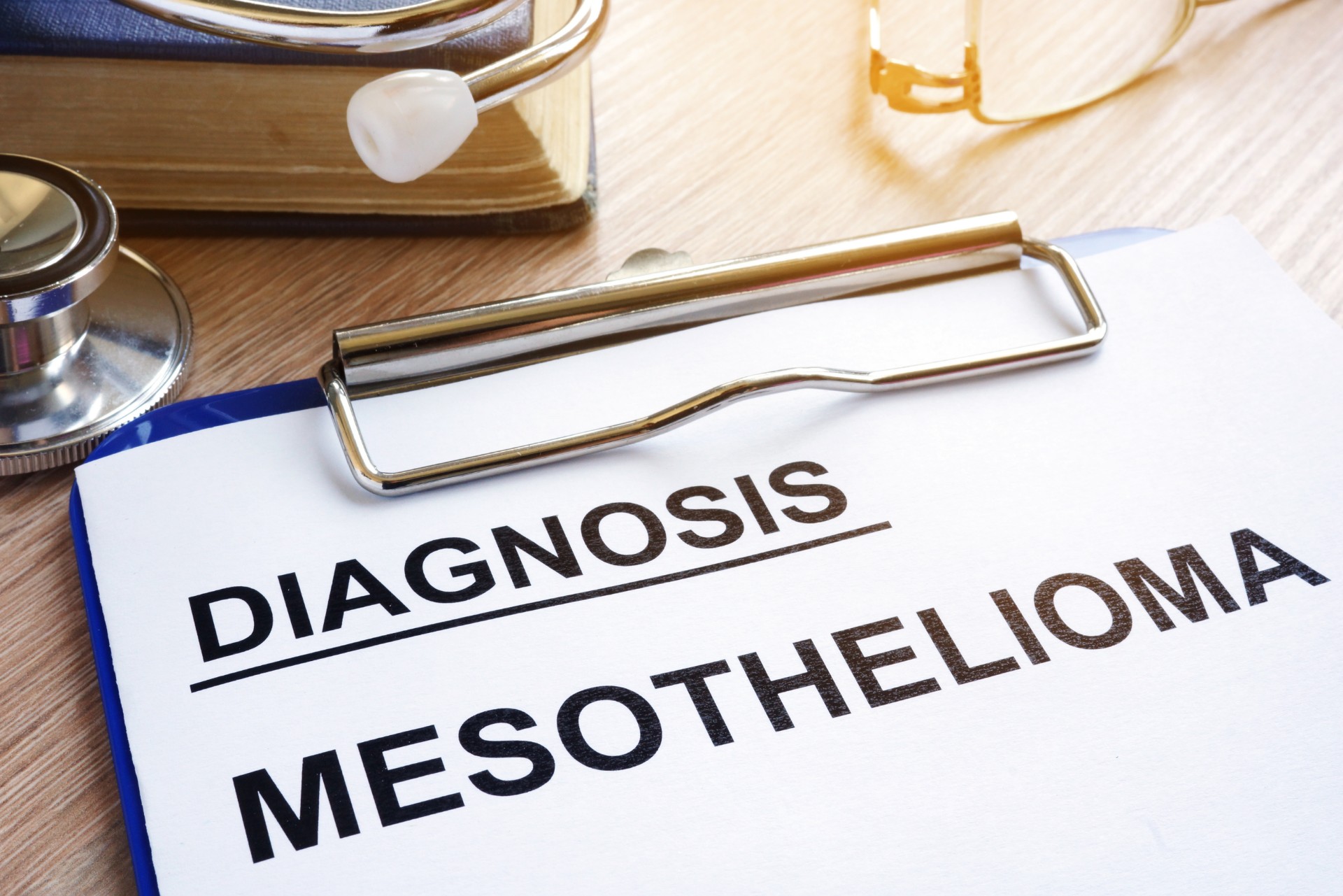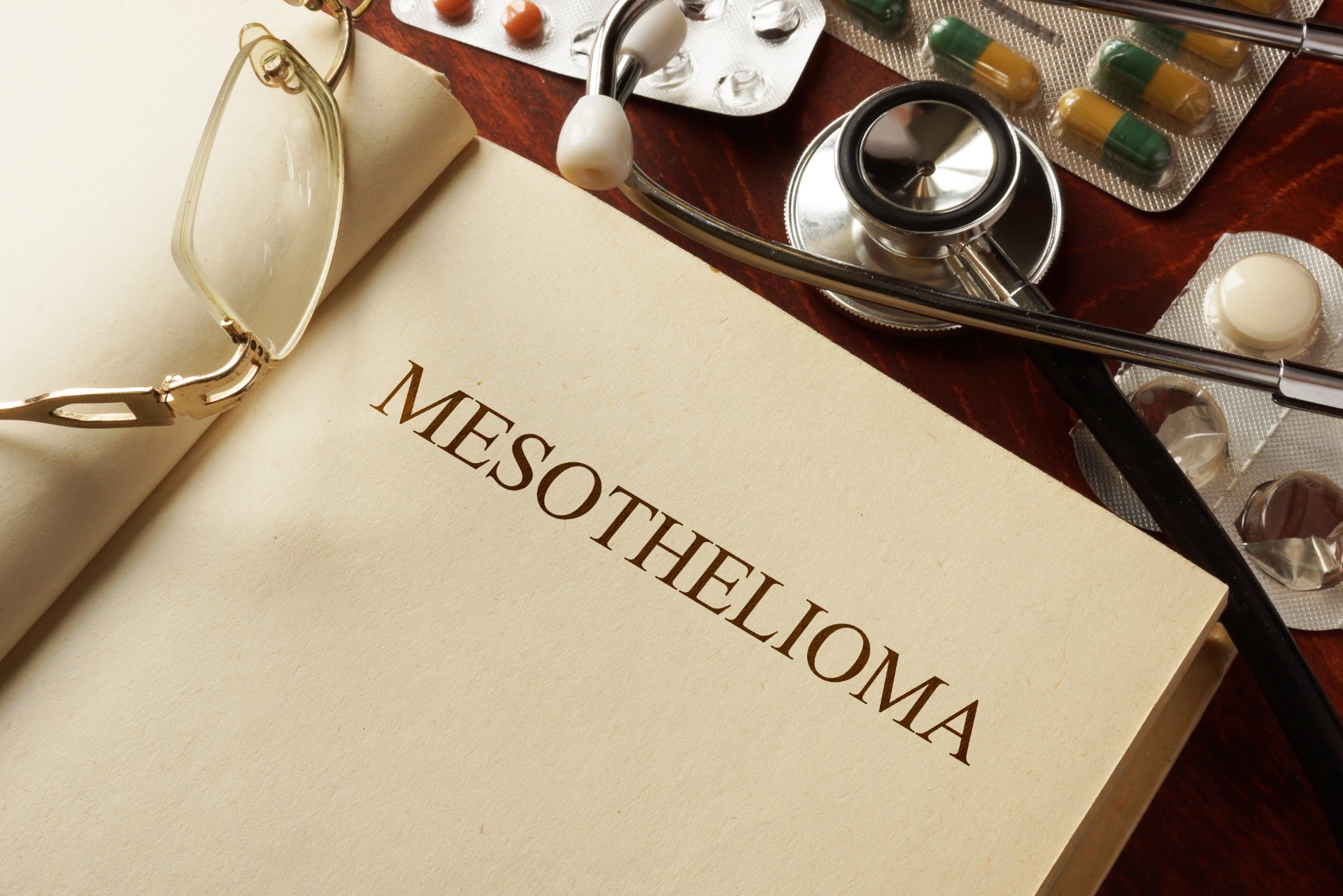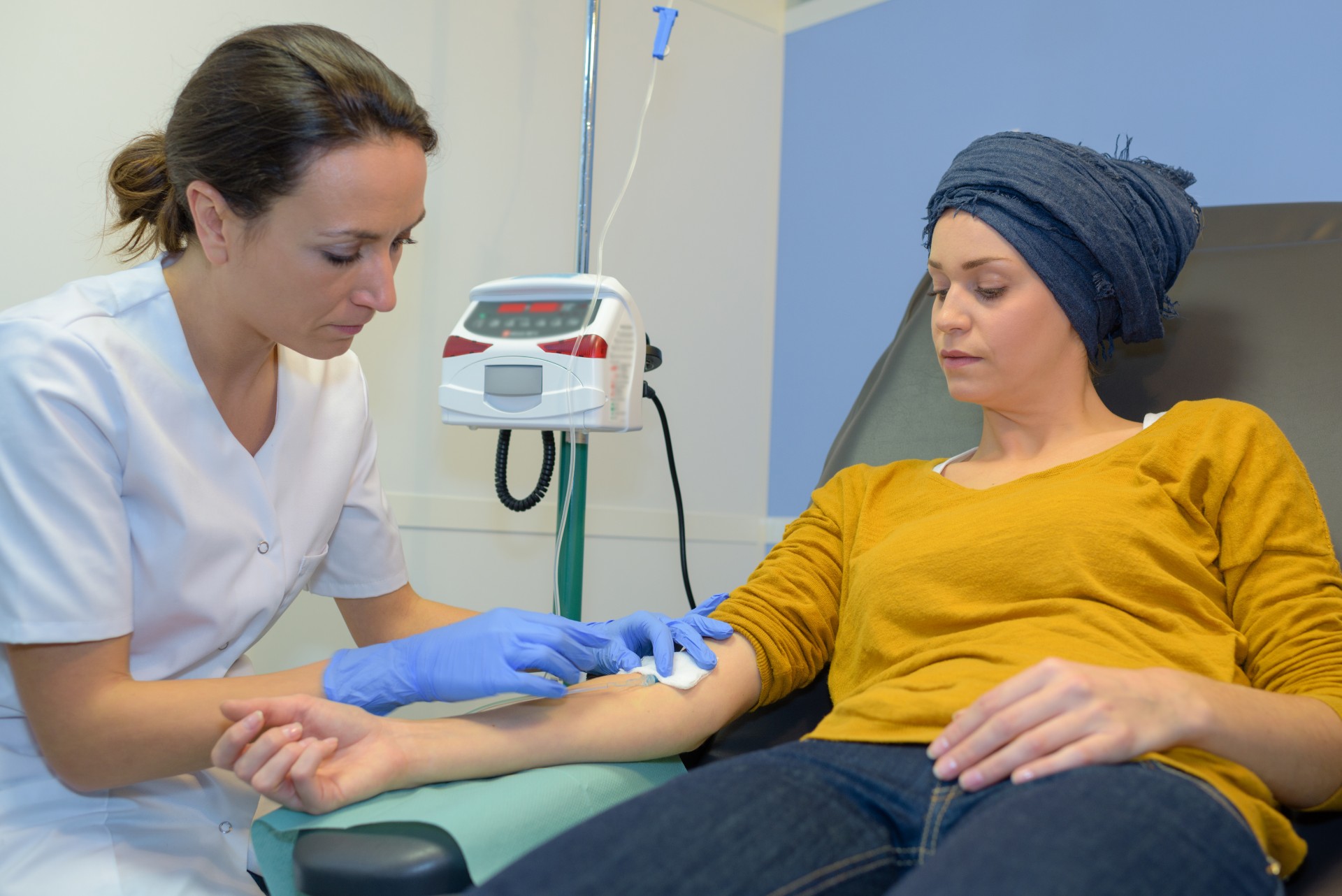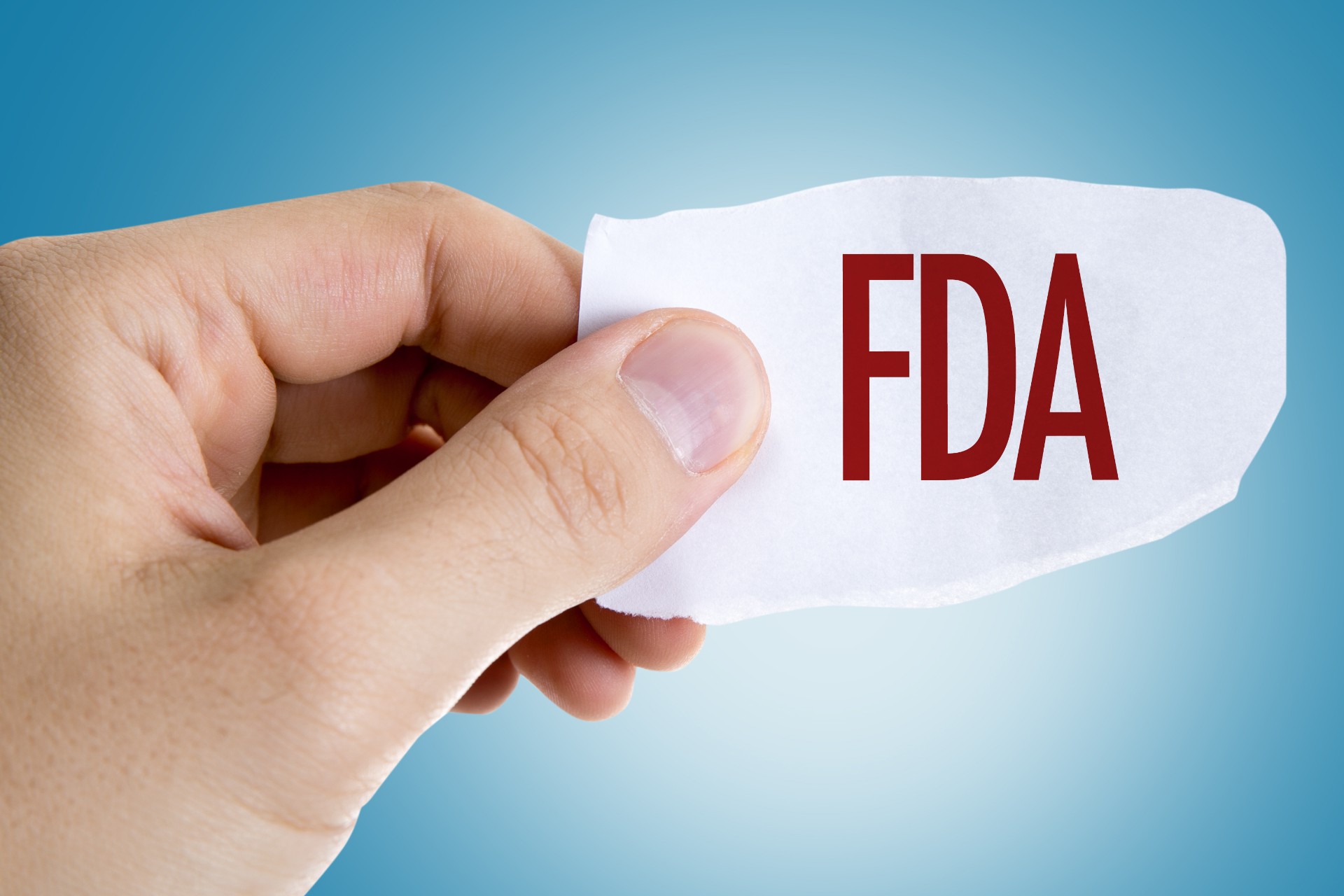
Every mesothelioma case comes with its own unique details, making every lawsuit different. Not every lawyer is capable of handling the varying types of mesothelioma lawsuits that could apply to your situation.
That is why it is so important to begin the process of finding the right mesothelioma lawyer immediately after you have been diagnosed. There are statutes of limitations that can affect your ability to seek the compensation you deserve if you wait to long for legal protection.
Every mesothelioma case is unique, and because of this, could be handled individually or as part of a class action lawsuit. The experienced mesothelioma lawyers at Hotze Runkle PLLC will advise you about which type is best for you.
Types of Mesothelioma Lawsuits
Every mesothelioma case is unique, and because of this, could be handled individually or as part of a class action lawsuit. The experienced mesothelioma lawyers at Hotze Runkle PLLC will advise you about which type is best for you.
The different types include:
Personal Injury Lawsuit
A personal injury lawsuit is filed after an individual is diagnosed with mesothelioma cancer. Personal injury lawsuits seek to hold the company or companies responsible for exposing the individual to asbestos. If this type of lawsuit is won, it would result in compensation for lost income (due to the injury), any medical care the patient received and will need, pain and suffering, and any related costs due to illness or recovery.
Wrongful Death Lawsuit
Wrongful death lawsuits are filed by a surviving family member on behalf of the decedent. Like a personal injury lawsuit, a wrongful death lawsuit is filed against the company or companies that are responsible for the asbestos exposure that led to the illness and death.
Family members can receive compensation for damages including but not limited to: outstanding medical bills, funeral costs, loss of benefits to the family from the relationship with the decedent, loss of potential income, pain and suffering, and other related losses.
Class Action Lawsuits
A class action lawsuit is one lawsuit filed by a group of people (referred to as a class) who may be suffering from similar damages caused by the same company/companies. In a class action lawsuit, the representing attorney will choose one individual case to be the sole representative of the entire group.
If your class action lawsuit is rejected, then all the cases within the class will still be able to move forward individually. If it is granted, then identifying members of the class action suit begins. Most class action lawsuits settle before going to court, and if compensation is won, then the damages are split between the members of the class.
Multidistrict Litigation
Multidistrict litigation, also known as MDL, allows individuals to file a claim under a streamlined process to allow the courts to handle more cases without the fear of back logging. A panel of several judges will determine whether they will consolidate these cases.
Benefits of Veterans
Veterans are able to file a claim with the VA for compensation for any injuries or illnesses that occurred as a result of their military service. Those that served in the U.S. military are at a greater risk of developing mesothelioma because of the asbestos used in military vessels, barracks, pipe coverings, and other tools or machinery. Individuals who were in the U.S. Navy are at the most risk because of their work in shipyards.
If you or someone you love is suffering from mesothelioma due to asbestos exposure, contact Hotze Runkle PLLC today at (877) 919-0830 for a free consultation. Our mesothelioma lawyers are ready to fight for you.

At Hotze Runkle PLLC, we understand the devastating effects that mesothelioma can have on the lives of those suffering from the disease. Companies have immorally and illegally exposed hundreds of thousands of American workers and families to mesothelioma-causing asbestos.
Hold those responsible for your pain accountable for their actions.
If you are uncertain about what comes next and whether or not you can take legal action against the party that exposed you to asbestos, then please continue reading for answers to some of the most frequently asked questions about mesothelioma lawsuits.
What is mesothelioma?
According to the National Cancer Institute, malignant mesothelioma is a cancer that affects the thin tissue lining of the lungs, chest wall, heart, as well as the abdominal cavity.
How does one get mesothelioma?
Mesothelioma stems from exposure to asbestos. Individuals that are most likely to suffer from mesothelioma are those that were exposed to asbestos while on the job. Others that may be suffering from the disease may have been exposed to asbestos in their household, most likely without ever knowing.
What is asbestos?
Asbestos is a heat-resistant mineral that can be woven into fabrics. The mineral is mostly used in fire-resistant and insulating materials such as pipe insulation. Asbestos was used for decades in a number of industries. This use of asbestos was profitable for companies but dangerous and toxic for workers.
How much exposure does it take to get the disease?
Individuals with prolonged exposure to asbestos are at a greater risk of developing mesothelioma. Although, there have been cases in which people have had very little exposure.
It is important to understand that just because symptoms are not showing up right now does not mean that you are in the clear. People exposed to asbestos from the 1940’s-1970’s are now being diagnosed with the disease.
Symptoms of mesothelioma?
Some symptoms of mesothelioma that affect the lungs appear similar to pneumonia. It is essential that you seek medical care immediately to verify whether or not you are dealing with mesothelioma or some other health issue.
Symptoms of mesothelioma include:
- Shortness of breath
- Chest pain
- Persistent cough
- Fever
- Night sweats
- Weight loss
Some symptoms that may affect the lining of the stomach include:
- Swelling of the abdomen (due to the buildup of fluids)
- Nausea
- Weight loss
- Obstruction of bowels
- Anemia
- Swelling of the feet
Some patients show no symptoms; if you have had excessive exposure to asbestos it is important to get a medical check including an x-ray. A chest x-ray will show if you have a buildup of fluid in your lungs.
An x-ray or CT scan is helpful at showing signs of danger and are needed to properly diagnose your condition. However, a tissue sample is the only way to know for certain.
What are my treatment options for mesothelioma?
To treat malignant mesothelioma, there are four types of standard treatment options: surgery, radiation therapy, chemotherapy, and targeted therapy. Each of these treatments are used for certain types of mesothelioma.
Surgery
The surgical option is usually used for those that have Stage I malignant mesothelioma. Surgical treatments are used for mesothelioma in the chest and include:
- Wide local excision is a surgery used to remove the cancer as well as some of the healthy tissue around it.
- A pleurectomy and decortication removes the lining of the chest, as well as part of the surface of the lungs.
- Extrapleural pneumonectomy is surgery to remove one entire lung and some lining on the chest, lining on the diaphragm, and lining around the sac of the heart.
- Pleurodesis is a treatment that drains the fluid between layers of the pleura (thin layered tissue).
Radiation
The patient may be given either chemotherapy or radiation therapy in order to kill any cancer cells that may be left after surgery. Usually used for Stage II, III, or IV malignant mesothelioma, doctors may use two types of radiation therapy, external and internal.
Chemotherapy
Hyperthermic intraperitoneal chemotherapy is used when mesothelioma has spread to the tissue that lines the abdomen and the organs of the abdomen.
Targeted Therapy
This therapy option causes less damage to healthy cells than chemotherapy or radiation therapy.
Can I sue if I have mesothelioma?
Every situation is different and dependent on a number of factors including:
- How you were exposed.
- Where you were exposed.
- The party responsible for your exposure.
- Time frames of exposure.
- When you were diagnosed.
Contact Hotze Runkle PLLC today to see if you are eligible.
Do I need a lawyer?
In any situation which you will be filing a lawsuit, hiring an attorney is a good idea. Especially one that has plenty of experience in mesothelioma lawsuits. This guarantees that your rights will be protected and that you will obtain the compensation needed to help ease your situation.
If you or a loved one are suffering from malignant mesothelioma after being repeatedly exposed to asbestos, contact Hotze Runkle PLLC today at (877) 919-0830 for a free consultation.

If you or a loved one have been injured at the hands of a pharmaceutical product, such as a chemotherapy drug like Taxotere, you are likely to have many questions about starting a legal claim against the party that harmed you.
One of the most frequently asked questions our experienced legal team at Hotze Runkle PLLC often hears is, “Who is responsible for my pharmaceutical product liability claim?” This question requires plenty of research as there are many parties that are involved in the process of making and distributing the pharmaceutical product, and it’s not always quite clear who exactly is at fault.
Let our experienced product liability lawyers help you to better understand who can be held responsible for your pain and suffering.
What is the first step?
Your first step should be to hire a qualified and committed lawyer that has experience in pharmaceutical product liability claims. You want to have a reliable lawyer that can effectively gather evidence for your case to help you find out who should be held liable.
Having an experienced team of lawyers behind you, like those at Hotze Runkle PLLC, can be extremely important when going up against the high-powered legal teams of pharmaceutical companies. This is especially true when the company tries to shift the blame.
Figuring Out Which Party is Liable
Many people that file a product liability claim have their finger pointed in the wrong direction. Consumers always want to go after the retailer, who, in some occasions, may be the one to blame. But that is not always the case.
Before figuring out which party is responsible, our lawyers here at Hotze Runkle PLLC will first start by figuring out what kind of defect resulted in your injury. A defective product may have been designed with a defect or manufactured with one.
Depending on the specifics of your case, multiple parties can be held responsible for a defective product. Everybody in the design, manufacturing, marketing, and selling process are responsible for making sure that everything they produce and sell is properly labeled with all information needed.
In cases involving medication like chemotherapy drugs, the pharmaceutical company who develops the product is also responsible for properly testing the product and checking for any potential side effects. Doctors and users must be warned of these side effects; warning labels are often required for prescription medications.
Parties that could potentially be held responsible for your pharmaceutical product liability claim include but are not limited to:
- Manufacturers – These are often large pharmaceutical companies who are involved in developing new drugs.
- Parties involved in testing – FDA approved drugs generally must undergo testing to validate their safety. The parties/laboratories checking these drugs could potentially be held responsible.
- Medical parties – A doctor or clinic can be held responsible for your injuries if they failed to properly warn you of the inherent risks associated with taking the drug.
- Retailers – This can include parties, such as a pharmacy, who may have played a role in the product’s defectiveness.
Each party is responsible for making sure the consumer is aware of any warnings or general information about the product.
Also, remember that in order to file your claim, you must have purchased your defective product from a legal supplier of that product. Anything you may have purchased through a third-party seller will most likely not be eligible as a claim.
Who’s fault is it?
There are two rules that can affect the outcome of your case:
- There is a doctrine known as, “Res ipsa loquitur,” or, “the thing speaks for itself.” According to this doctrine, there would be no defect if it hadn’t been for the negligence of someone within the company, and therefore relieves you of having to prove anything. Now, the pharmaceutical company has to prove that there was no negligence on their part.
- The second rule, if it applies, states that you would only have to prove that the product was, in fact, defective, instead of also having to prove that the defect came from the negligence of the manufacturer.
If you or a loved one are suffering eye-related health issues as a result of chemotherapy drugs, contact the national litigation team of Hotze & Runkle today. Call us today at (877) 919-0830 for a free consultation!

When trying to figure out who is responsible for a defective product, it is important to take into consideration product liability law. Product liability laws are regulations established to protect consumers and to assist them in recovering damages for injuries sustained from using a dangerously flawed product.
At Hotze Runkle PLLC, our national litigation team has been monitoring the experiences of breast cancer survivors and chemotherapy patients who have suffered eye-related injuries as a result of certain chemotherapy drugs such as Taxotere. Because defective drugs and medical devices can fall under product liability claims, it is important for those seeking to file a claim to understand what evidence is needed to support their case.
If you have suffered from excessive tearing and other eye-related injuries as a result of chemotherapy treatment, then please consider the following information and do not hesitate to contact the experienced product liability lawyers at Hotze Runkle PLLC today.
A Quick Note on Product Liability
Product liability refers to the liability a seller or manufacturer is responsible for should their product cause injury to consumers.
It is important for individuals seeking to file a product liability claim to understand that product liability laws differ from state to state. Each state will examine negligence, warranty breaches, commercial statuses, and strict liability differently.
Who is Responsible For My Defective Product?
Various parties in the product’s chain of distribution may be held responsible for the defective nature of the product. Responsible parties may include:
- The manufacturer of the product
- A manufacturer who develops certain components of the product
- The party that assembles or installs the product in question
- The wholesaler
- The retail store where the product was sold
Keep in mind that in order to file a liability claim, you would have had to purchase the product through a legal supplier. Items purchased through a third-party seller may not be eligible for a product liability claim.
What Evidence Do I Need to Prove My Claim?
As in any field of law, evidence is going to be essential to proving your claim and obtaining the compensation you deserve. When it comes to a product liability lawsuit related to a defective drug, there is some pivotal evidence you should help your lawyer collect including:
- Medical Records – This is one of the most important pieces of evidence that you will need. Medical records will show that you were, in fact, treated for an injury due to the product in question. These records will also provide information regarding what long-term effects the injury may have on you, if any, and what treatments you are undergoing or may have to undergo in the future.
- Bills – This evidence is important because it shows your injuries as a tangible, financial issue. Bills (i.e. medical bills) will show how much damages you had to pay out-of-pocket.
- Pay Stubs and Tax Returns – This is another form of financial evidence needed to show your economic losses due to your injuries. Some injuries may prevent a person from working for short or long periods of time, and your pay stubs and tax returns help document the time and money you have lost. It can even be used to provide insight into what you will lose in the future, if the injuries you have suffered end up causing long-term health problems.
- Photos/Videos – This gives the judge, jury, and insurance companies a significantly clearer view of how truly extensive your injuries are and how you were affected.
- Insurance Policy– You should provide your lawyer with documentation on any type of insurances you may have. This is essential to making sure that all of your medical bills get paid.
- Other Important Documents – Because every case is different your Hotze Runkle PLLC lawyer will be able to give you more thorough details on any other documents you may need pertaining to your specific case.
Product liability actions can be especially complex. Reaching out to the right lawyer who has experience specifically in product liability is one of the most important steps you can take.
If you or a loved one has suffered from an injury due to a defective product and need getting started on a product liability claim, contact Hotze Runkle PLLC today at (877) 919-0830. We are currently providing legal guidance for breast cancer survivors and chemotherapy patients who have undergone eye-related injuries as a result of their chemotherapy drug.

At Hotze Runkle PLLC, one thing we’ve learned is that when serious illnesses, like cancer, affect us, they have a tendency to cause other lasting health issues. Beyond the damage they do our peace of mind and emotions, cancer treatment can change your quality of life for the worse.
Chemotherapy treatment is one such regimen that can have long-lasting negative effects. The product liability lawyers at Hotze Runkle PLLC are leading the way when it comes to fighting for the rights of breast cancer patients and survivors who have been hurt by pharmaceutical companies and drug manufacturers.
The use of certain chemotherapy drugs has been shown to cause excessive tearing and permanent closure of a patient’s tear ducts. These issues, in turn, cause other eye-related complications that can require surgery as well as lead to significant amounts of pain.
Why Do These Side Effects Get Ignored?
There are a number of reasons why an individual being treated with Taxotere or another chemotherapy drug might not realize the potential for damage to their vision. The first is probably the most obvious: their attention is likely focused on the status of their health. It is understandable that they might not want to divert energy away from that.
Another can be that it is difficult for a cancer patient to decide to change any part of their treatment, particularly if they are seeing positive results.
At times, side effects are ignored simply because their seriousness does not outweigh the significance of the actual disease. In a fight with cancer, the stakes are often life and death, and the internal discussion between life and their quality of life may not be given extensive consideration.
The Changes to Your Eyes and Vision Can Be Drastic
These are all legitimate reasons why the state of our vision can be put on the back burner. But ignoring these risks does not minimize the dangers that Taxotere and other chemotherapy drugs pose to the health of your eyes.
One case of note is that of Carolyn Choate, who survived her battle with breast cancer fifteen years ago but still continues to struggle with chronic eye problems today. Her health issues began shortly after she started her chemotherapy treatment, which included four rounds of Taxotere over a period of eight weeks. The treatments left her eyes constantly tearing, every day and at all hours.
Her physicians ran tests on her tear ducts when the issue began to see if the tearing was a result of blocked tear ducts. The passage was not blocked and they could not offer her any explanation in light of their findings. Fortunately, Carolyn found a bit of relief from the problem in recent years, estimating that the severity of her watery eyes has diminished by about 35% in the last decade.
Even accounting for this improvement, that still leaves five years of non-stop tearing that has still not been fully alleviated even to this day, despite visiting and consulting with numerous specialists on the matter.
Carolyn’s career as a TV reporter and daily life have both been significantly affected by this. Additionally, though not something that she perceives to have been a negative side effect, the color of her eyes changed after her chemotherapy.
The national product liability lawyers at Hotze Runkle PLLC know that all anyone wants after chemotherapy treatment is to return to their previous way of life. If you or a loved one is fighting against eye-related problems caused by a chemotherapy drug, contact us today at (877) 919-0830 for a consultation.
However you approach it, Taxotere and other chemotherapy drugs have been proven to cause long-lasting damage and changes to people’s eyes and vision. For them, the battle for their health does not end once chemotherapy is over.
If you or someone you know has experienced problems with their vision after being treated with Taxotere or other chemotherapy drugs, call us today. Your vision is a gift and we will fight to ensure that Taxotere does not steal it away.

The FDA (Food and Drug Administration) is the federal agency in charge of approving and ensuring the safety of food products, medications, vaccines and medical devices, among other things.
More specifically, according to the official FDA website, their mission is “[to protect] the public health by ensuring the safety, efficacy, and security of human and veterinary drugs, biological products, and medical devices; and by ensuring the safety of our nation’s food supply, cosmetics, and products that emit radiation.”
Understandably, the American public has come to trust the https://www.doctorsexpresswaltham.com/order-strattera/ products approved by the FDA. As a federal agency manned with trained professionals, we trust their decisions. Yet, there are problems and concerns with their approval process that should make you take the “FDA approved” status with a grain of salt.
Research on drugs approved by the FDA from 2001 to 2010 has shown that 71 drugs out of 222 – almost one in every three – have ended up receiving a black box warnings about new found risks or required additional announcements about unknown side effects.
The product liability lawyers at Hotze Runkle PLLC want to make sure you have the information you need when dealing with an illness. Many people believe a drug by the FDA approved means it is completely safe to consume, however, major risks are often discovered years after the product has been out on the market.
We have seen that with a number of drugs including chemotherapy drugs like Taxotere. This chemotherapy medication has caused major issues for breast cancer patients and survivors including excessive tearing, swollen eyelids, blocked tear ducts, and other eye-related health issues. While the individuals working within the FDA surely attempt their best to ensure all products are safe for consumers, the sad reality is that many products come through that can cause major harm to users.
The FDA Approval Process
In order to better understand the issues with the FDA review process, it is valuable to understand each step:
-
- The drug is developed.
A pharmaceutical company discovers a new compound or drug and start the process of getting it approved by the FDA before marketing it.
-
- Testing.
Next, it must be tested (generally on animals) in order to screen it for toxicity and to better understand possible side effects. It must be proven that the drug would not cause serious harm to a human.
-
- IND applications.
Once the initial data is gathered and the drug is shown to not cause serious harm to humans, the company submits an Investigational New Drug (IND) application with initial data, composition, manufacturing, and a proposed plan for testing.
-
- Clinical trials.
The clinical trials on humans are divided into three phases:
-
-
- Phase 1: Discovery of common side effects in humans. 20 to 80 participants are used during this portion
- Phase 2: Determining the efficacy of the drug. The drug is now tested on people with certain illnesses. This is normally done by dividing participants into two groups. One is given a placebo and the other is given the actual drug. Hundreds of subjects participate in this phase.
- Phase 3: Additional testing for efficacy and safety. In this phase, the drug is given to the subjects in combination with other drugs or in different doses. More than a thousand people participate during this phase.
- NDA application.
-
Once it is proven that the drug is safe and accomplishes its medical goal, the company must submit a New Drug Application (NDA). The FDA reviews the NDA and the data sent with it to determine whether to approve or not.
-
- Drug labeling.
The FDA must approve the information provided in the label to verify that doctors and the general public will be properly informed.
-
- Facility inspection.
The FDA is also in charge of supervising the facilities in which the drug will be produced.
-
- Drug approval.
If the drug passes all the previous requirements, it will be approved. Otherwise, the FDA sends a notice to the company informing them their drug was not approved.
-
- Post-marketing monitoring
If approved, the medication goes into the market. The company is responsible for safety updates to the FDA regarding the drug’s performance.
Issues with the Approval Process
While the system looks straightforward and functional, there are several reasons why the process fails in certain areas.
Cherry-picking: Companies make several trials and tests, however, not all of them are successful. To essentially cheat the system, only the successful ones are sent to the FDA. This is known as cherry-picking. For instance, Dr. Alexander Bingham, Clinical Psychologist and Professor of Psychological Research at John F. Kennedy University, found that while 20 studies were conducted on the antidepressant Prozac, 17 failed. In order to still be approved, the company only sent the successful results. This type of behavior from pharmaceutical companies may be rampant.
Conflict of interests: Almost three-quarters of the FDA’s funding comes from pharmaceutical companies. In fiscal year 2015, the FDA spent $1.1 billion on prescription drug oversight. Congress only provided $331.6 million – or about 29% – the rest came from private companies.
Fast-tracking: Though many life-saving drugs can benefit from the fast-tracking program, it can also be misused. The fast-tracking program was to created to fast-track specific medications by allowing products to be approved in sections rather than having to go through all the application process at once. Medications are also reviewed within less time than the traditional process.
Accelerated approval: As mentioned previously, accelerated approval is important for medications capable of treating life-threatening illnesses, but can also be taken advantage of. It allows quicker approval for medications that cater to illnesses or needs by providing “surrogate endpoints” to prove their effectiveness. For example, a cancer-treating drug, in theory, could be approved by providing the FDA approval committee x-rays showing the size of the cancer tumor was reduced. However, this process doesn’t necessarily prove the correlation between the medication and the healing.
Consumer reporting: The FDA sometimes relies on the voluntary report of patients to know when an approved drug is causing unexpected – and harmful – side effects. The issue with this process is that the reporting is completely voluntary and few people know of this opportunity. The online reporting system is also outdated, which makes it even less inviting to report a danger drug.
The Food and Drug Administration (FDA) is responsible for regulating and overseeing the development of prescription drugs, over-the-counter drugs, medical devices, and other medical products. While the organization attempts to protect the public to the best of its ability, at times drugs are sometimes approved because of falsified tests and results.
If it is found that the product or medication (chemotherapy drugs in this instance) causes unexpected and serious side effects, then users may have the ability to file a lawsuit.
At Hotze Runkle PLLC, we care about your health and safety. If you or a loved one is fighting against eye-related problems caused by the chemotherapy drug Taxotere, contact us today at (877) 919-0830 for a consultation.
We will work as hard as needed to get you the results and compensation you deserve.

Cancer offers no mercy for those it affects, and sadly, the treatment process often causes as much damage as it undoes. Chemotherapy drug cocktails can leave patients in pain, constantly tired, nauseated and generally feeling unwell.
At Hotze Runkle PLLC, we’ve seen firsthand the negative effects that chemotherapy drugs like Taxotere can have on people. Those searching for a path to a cancer-free life are often left with new, enduring health problems after chemotherapy treatment.
With the majority of the attention surrounding Taxotere lawsuits focused on permanent hair loss, lost in the media spotlight is the effect that it can have on a patient’s vision. We urge you to seek both medical and legal counsel for any ongoing issues with your eyes and vision if you were treated with the chemotherapy drug Taxotere.
A Quick Refresher
We have covered some of the potential sides effects that can affect a patient’s eyes after the use of Taxotere but it is definitely worth revisiting. Some of the problems Taxotere has been shown to cause include:
- Excessive tearing
- Dry, swollen eyelids
- Blurry vision
- Blocked tear ducts
- Constant itchiness
Even symptoms like an increase in “floaters” during and after treatment have been documented by patients and their medical teams. It is also possible that some of the difficulties that impact vision and the eyes could be attributed to nerve damage.
These are some of the more extreme and worrisome of adverse effects caused by using Taxotere.
Basic Questions and Answers Regarding Taxotere
Are these issues really the result of Taxotere and other related chemotherapy drugs?
Simply put, yes. There is ample evidence, both scientific and anecdotal, that Taxotere can and likely will affect your vision to some degree.
Is it necessary to tell my oncologist about minor issues with my eyes while taking/right after taking the drug?
Any differences you notice in your vision or how your eyes feel may not be enough to seriously alter your everyday quality of life. However, how often you experience excessive tearing and other side effects can change quickly, and the more information you and your medical team have about new developments in your health, the quicker they can get a plan in place to manage these issues. As with all things related to chemotherapy, you can’t assume that conditions will remain consistent or that new problems won’t arise.
How soon can I rule out more serious eye issues/disorders?
Another one of the troubles about Taxotere and other chemotherapy drugs is that when they affect your vision, you won’t have access to any definitive answers for some time.
In order to properly diagnose a new eye disorder, you have to wait at least 3-6 months to meet with an ophthalmologist, so that Taxotere and other chemotherapy drugs will have completely passed through your system.
Do I have to wait that long to see an eye doctor?
If your excessive tearing and other symptoms last for extended periods of time, especially multiple days in a row, you SHOULD NOT ignore them waiting for chemotherapy drugs to clear your body. When tearing, dryness, or blurred vision significantly impact your ability to do everyday tasks, then you should see your ophthalmologist. Inform them of the issues you are dealing with are a result of your chemotherapy treatment.
How seriously should I consider corrective surgery?
Surgery is a possibility when the underlying cause for excessive tearing is determined to be a blocked tear duct. However, this is usually a last resort when other options like intubation have failed to provide relief of the blockage. The most serious complication that can arise in most people after surgery is infection. As with any proposed treatment, it is important to consider all options and your current and prospective health.
There is no need for the hard times cancer survivors could potentially face after being healed. Taxotere has a documented history of leaving people with additional health problems that have gone overlooked.
The national product liability lawyers at Hotze Runkle PLLC know that all anyone wants after chemotherapy treatment is to return to their lives with a renewed sense of well-being. If you or a loved one is fighting against eye-related problems caused by this chemotherapy drug, contact us today at (877) 919-0830 for a consultation.
We will hold the drug manufacturers responsible for the harm they have caused and get you the compensation you need to live the healthy life you deserve.

Taxotere is a chemotherapy drug specifically designed to treat a variety of cancers including prostate, lung, stomach, neck, head, and breast cancer. Unfortunately, many patients are unaware of the medication’s long list of serious side effects that can include excessive tearing, tear duct blockage, and other eye-related issues.
The U.S. Food and Drug Administration (FDA) has taken note of several of these adverse effects that can cause long-term issues for cancer survivors. In fact, Taxotere manufacturer, Safoni, currently faces nearly 8,000 lawsuits over the harmful side effects faced by users.
The national product liability attorneys at Hotze Runkle PLLC know the dangers of Taxotere and want to expose the harsh realities of this commonly used drug.
Compensation for Serious Symptoms
Some of the most common side effects experienced by individuals treated with Taxotere include low white blood cell counts, swelling and weight gain, nausea, mouth sores, hair loss, fatigue, and even loss of nails. Most of these side effects do clear up after chemotherapy treatment is done.
However, your attorneys at Hotze Runkle PLLC have found there to be several lasting side effects such as excessive tearing of the eyes, blocked tear ducts, and other eye-related problems.
If you or a loved one have received chemotherapy treatment with the drug Taxotere and have noticed side effects of the drug that have extended beyond the period of treatment, there may be compensation available.
The Prevalent Use of Taxotere
Chemotherapy drugs like Taxotere work by killing fast-growing cancer cells in the body – both normal and cancerous. This drug attacks the RNA and DNA structures of the cells that allow them to reproduce effectively.
75 percent of individuals with breast cancer use the drug Taxotere in chemotherapy. Although there are other chemotherapy drugs on the market, the vast majority of individuals with breast cancer are treated with Taxotere because of its effectiveness and ability to be administered once every three weeks. Other forms of chemotherapy treatment can be administered only on a weekly basis.
FDA Releases Taxotere Truth
In 2015, the Sanofi Company and the FDA released a full description of warnings and adverse reactions for patients who used specific doses of the drug. Undoubtedly, many patients would have thought twice about choosing this particular chemotherapy if this information had been made readily available to them.
The warning reveals that Taxotere caused a number of serious conditions including:
- Acute Myeloid Leukemia – cancer of blood cells.
- Cystoid Macular Edema – loss of vision.
- Toxic Deaths
Prior to 2015, much of this information was unavailable to the public.
The drug has been administered for nearly 20 years and its effects have taken a toll on users and will continue to so with patients still receiving treatment with it.
The Sanfoni company should face the consequences of inflicting harm on you or your loved ones. Contact the product liability lawyers at Hotze Runkle PLLC for experienced help in seeking compensation from this negligent drug company.
Contact our law offices today at (512) 476-7771 or (877) 919-0830 for a consultation. At Hotze Runkle PLLC, we aim to help injury victims seek the ultimate justice.

Watery eyes, known medically as epiphora, is a symptom experienced by cancer patients and survivors alike. Excessive tearing and other eye-related conditions have been shown to be caused by chemotherapy medications like Taxotere.
If you were, or are, undergoing chemotherapy and have suffered from excessive tearing, contact the product liability attorneys at Hotze Runkle PLLC today at (512) 476-7771 or (877) 919-0830 to schedule your consultation.
Depending on your specific case, there may be a number of reasons why you could be experiencing excessively watery eyes. Realize that you are not alone. Many breast cancer patients and survivors have undergone conditions just like your. That is why at Hotze Runkle PLLC we have decided to put together a series of tips meant to help you diminish the symptoms and hopefully improve your quality of life while we fight for you.
Dry Eye Syndrome & Excessive Tearing
Some chemotherapy drugs may cause what is known as dry eye syndrome, or keratoconjunctivitis sicca. This condition means either your eyes are not producing enough tears to lubricate, making them red and dry, or it is not producing a key lubricating chemical which can cause excessive tearing.
You can take the following actions to decrease excessive tearing in your eyes:
- Wear sunglasses. When outside, it is recommended to wear sunglasses to avoid losing moisture in your eyes due to the wind or sun rays. During chemotherapy treatment, your eyes may also be more sensitive to light and sunglasses can help to protect them.
- Wash your eyelids with baby shampoo. Use baby shampoo to gently wash away any crust formed by the excessive tearing.
- Clean out work/home air filters. Excessive tearing can be further irritated by your allergies or by dust and pollen in the air. Do your best to eliminate them at home or work by constantly changing air filters and purchasing an air cleaner if necessary.
Blocked Tear Ducts
Tear duct blockage is another possible side effect of chemotherapy drugs. Eyes produce tears every time we blink to keep themselves lubricated. Excess tears and mucus need to be drained through a tiny opening in the corner of our eye known as a punctum, which is the entrance to the nasolacrimal duct, or tear duct.
When tear ducts become blocked, the excess tears cannot be drained from the eye, which can, in turn, cause a number of eye-related health issues such as infections, swelling, and severe eye pain.
The following are a few recommendations you can follow to decrease the discomfort associated with blocked tear ducts:
- Use warm compresses. Warm compresses can help protect you against infections by helping to temporarily clear the tear duct. Just make sure they are “warm”, as anything too hot can potentially hurt your eyes.
- Avoid using contacts. Whether you are suffering from excessive tearing or blocked tear ducts, it is important to avoid using contacts as they can cause serious eye infections.
- Talk to your oncologist. Make sure to communicate any discomforts to your oncologist, who should be able to recommend an ophthalmologist to help you.
Some ocular problems can generate other eye-related complications that have lasting effects. Other symptoms to look out for are sensitivity to light or blurry vision. These could mean there is something else wrong with your eyes. Communicating these symptoms to your medical provider can prevent any lasting damage to your eyes.
Do not hesitate to contact the product liability lawyers at Hotze Runkle PLLC if you or a loved one is suffering eye-related complications due to chemotherapy drugs like Taxotere.
Contact us today at (512) 476-7771 or (877) 919-0830 to schedule a consultation. At Hotze Runkle PLLC, we don’t demand your trust, we earn it.

The product liability lawyers at Hotze Runkle PLLC are leading the way when it comes to fighting for the rights of breast cancer patients and survivors who have been hurt by pharmaceutical companies and drug manufacturers. The use of certain chemotherapy drugs has been shown to cause excessive tearing and permanent closure of a patient’s tear ducts. These issues, in turn, cause other eye-related complications that can require surgery as well as lead to significant amounts of pain.
We know that undergoing chemotherapy is a tough experience and having to deal with unexpected health complications can really place a toll on you. That’s why our dedicated team of national product liability lawyers are ready to walk you through this complicated process.
We are eager to provide you with as much information as possible to ensure that you understand everything that is going on should you choose to file a lawsuit. Please read through the following pharmaceutical lawsuit FAQs and feel free to contact us at (877) 919-0830 if you have any additional questions.
What is a product liability claim?
Product liability refers to the legal responsibility of a manufacturer or vendor to sell a safe product and their liability if the product causes harm. In cases where drugs cause unexpected damages, the victim who has suffered as result of using the product may have a product liability claim.
These types of claims generally fall into three categories:
- Defective Manufacture: When a product becomes faulty because of the manufacturing process.
- Defective Design: This occurs when the original design of the product had faults.
- Failure to Warn: This can include inadequate warnings about the product’s side effects to both doctors and/or patients, improper marketing for uses the product was not designed for, and failing to provide adequate instructions on how to use a particular drug or device.
How do I know if I have a case?
In order to file a lawsuit against a pharmaceutical company or manufacturer, you have to have suffered some type of injury or medical complication as a result of using the defective drug.
In order to successfully win your case, our national litigation team will prove that you were injured as a result of the defective chemotherapy drug, the medication was defective in some specific way, and that the manufacturer failed to warn of the potential for injury.
Why do I need a lawyer?
Lawsuits over defective drugs can be very complicated and require expert witnesses, dozens if not hundreds of hours of research, as well as keen insight into product liability and other areas of law. Without the guidance and legal protection of a quality lawyer, it can be nearly impossible for you to recover compensation for your medical bills and other damages.
It is also important to choose an experienced product liability attorney with a solid track record and one willing to take your case to trial. At Hotze Runkle PLLC, we have handled many drug and medical device liability lawsuits.
What are some of the side effects of these chemotherapy drugs?
Chemotherapy drugs affect patients in a myriad of ways causing side effects such as:
- Nausea
- Tiredness
- Vomiting
- Temporary hair loss
- Muscle or joint pain
- Weakness
- Severe headaches
- Vision changes
- Chest pain
And much more.
At Hotze Runkle PLLC, we are focused on helping those patients who have suffered from unexpected side effects that include excessive tearing (also known as epiphora), the blockage of tears ducts, or who have had to undergo surgery to allow tears to bypass the blocked duct and work correctly.
What chemotherapy drugs are causing these issues?
At Hotze Runkle PLLC, we have been closely monitoring chemotherapy drugs linked to excessive tearing and have noted one specific drug that appears to be the primary source of issues – Taxotere (docetaxel).
There are, however, a number of additional chemotherapy drugs that we are also keeping an eye on including:
- Xeloda (capecitabine)
- Cytarabine
- Adriamycin (doxorubicin)
- Fluorouracil
Who is held liable in a product liability lawsuit (who would I sue)?
There may be multiple parties responsible for your product liability claim including those involved in the creation, marketing, or distribution of the product.
Your committed national litigation team at Hotze Runkle PLLC will help to uncover specifically who is responsible for your pain and suffering, and we will bring them to justice.
How much is my case worth?
Recovery results will vary from patient to patient and will depend on various factors including:
- The product that caused the injury
- The injuries you suffered as a result of taking the drug
- The amount of medical bills you owe and lost wages
- Any future medical bills and how the damages have affected your ability to work
Some of the types of compensation you may be eligible to receive include but are not limited to:
- Economic damages. This can include medical bills, lost income, and more.
- Non-economic damage. This refers to any physical, mental, or emotional damages suffered by the victim and caused by the responsible party (i.e. the pharmaceutical company). The jury defines the amount.
- Punitive damage. This type of compensation is only awarded if it is possible to prove malice, fraud, or gross negligence. This would be an additional economic punishment to the company or manufacturer due to their reckless behavior.
Trust in our dedicated team to fight for every penny that you deserve.
What do I need to provide my lawyer with?
In order to adequately develop your claim, you will need to provide your lawyer with a number of documents that relate to your case including:
- Medical bills
- Receipts for any prescribed medications including those that may have caused your injury
- Medical records (hospital stays, doctor visits, therapy treatment plan, x-rays, MRIs, etc.)
- Photo/video related to your injury
- Any documentation you recorded
- Any proof of lost wages including pay stubs and bank statements
Is there a time limit to filing a lawsuit?
There are certain time limitations (known as statute of limitations) that dictate how long you have to file a claim after you have been injured. The statute of limitations varies from state to state and is dependent on the type of lawsuit being filed.
In the state of Texas, individuals have two years to file a pharmaceutical lawsuit. Because it can be difficult for the average citizen to understand when exactly the starting point began, it is essential to seek out the guidance of a qualified lawyer.
Can I still file a claim even if the drug was approved by the FDA?
The Food and Drug Administration (FDA) is responsible for regulating and overseeing the development of prescription drugs, over-the-counter drugs, medical devices, and other medical products. While the organization attempts to protect the public to the best of its ability, at times drugs are sometimes approved because of falsified tests and results.
If it is found that the product or medication (chemotherapy drugs in this instance) causes unexpected and serious side effects, then users may have the ability to file a lawsuit.
How long will the lawsuit take to wrap up?
The truth is that pharmaceutical lawsuits can be complicated and thus require a substantial amount of time to resolve – some lawsuits can take years to conclude. However, some defendants may be willing to negotiate a settlement without going to court, which can reduce the time.
Talk with our product liability attorneys at Hotze Runkle PLLC to learn more about the specifics of your specific case and how long the process could take to complete.
Will I have to testify?
Some lawsuits are settled before the case ever goes to trial and in those instances, you will not have to testify. However, if the case does go to court, you will likely have to testify.
